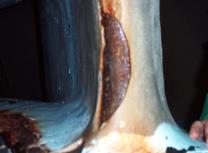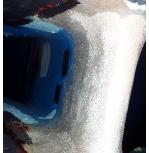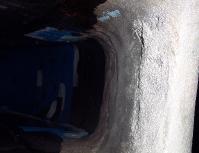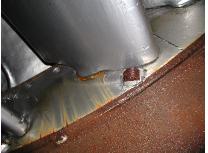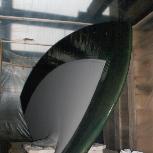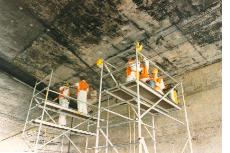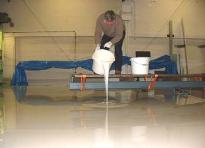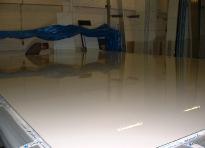 |
||||||||||||||||||||||||||||||
 |
||||||||||||||||||||||||||||||
|
Hydro Erosion | Bridge Strengthening | Europe's Biggest Table?
|
||||||||||||||||||||||||||||||
|
||||||||||||||||||||||||||||||
|
Formulated Resins Ltd © Formulated Resins Ltd 2004 |
||||||||||||||||||||||||||||||
|
After only 500 operational hours the availability of the station was jeopardised by erosion so extensive that it would have taken three months to remedy using conventional techniques. The usual methods of welding and profile grinding the affected areas would not guarantee a recurrence of the problem. It seemed likely that non-programmed downtime would become a permanent and unplanned overhead. Formulated Resins worked with National Grid to assess the physical and environmental requirements, which led to the development of FRS 122, a material more durable than steel or concrete and capable of withstanding the extreme conditions within the turbines. The turbines are now able to run to their designed overhaul cycle and annual savings in materials, time and out-of commission losses are estimated to run into six figures. BACK TO TOP OF PAGE ************************************************************ Solving Erosion Problems on an International Stage |
||||||||||||||||||||||||||||||
|
||||||||||||||||||||||||||||||
|
Formulated Resins Ltd developed Softurb 80 for an international hydro power company to reduce erosion on water turbines. This coating system enables the stainless steel and carbon steel to resist abrasion and cavitation from waterborne particles ranging in size from 0.1mm to 0.6mm travelling at 70m per second. The pictures above show the successful treatment of erosion in India and China.
BACK TO TOP OF PAGE Engineering - Bridge strengthening
We used FD808, a two-part epoxy resin, to attach a steel plate to the underside of the bridge. Both concrete and steel surfaces were cleaned by shot blasting, holes were drilled in both, and long threaded bars fixed into them. The steel plate was suspended on these bars by screwing nuts underneath the plate, leaving a gap of 0.5m. The adhesive was then applied to both concrete and steel mating surfaces and the steel brought up to the concrete by fastening the screws. After the adhesive had cured the bars were sawn off. FD808 was specially formulated for this type of application. It offers
Normally the adhesive is supplied in a tin into which, when required for use, the correct amount of FD808 hardener is poured from the accompanying polythene bottle. Once mixed, due to its limited pot life, the adhesive must be applied immediately. As work on this bridge was on such a large scale the resin was supplied in drums and the resin was applied in sections, with excess adhesive squeezed out from one section being applied to the next. To achieve optimum curing temperature the sides of the bridge were shrouded in tarpaulins and gas heaters placed beneath: this enabled temperatures of 15-18°C to be maintained and curing to complete in 24 hours. In all 816 metres of 400 x 100mm structural steel plate was attached to the bridge, using 4.5 tonnes of adhesive - believed to be the largest amount of adhesive ever used for a single application. The whole operation was successfully completed within the specified time of 12 weeks. BACK TO TOP OF PAGE *********************************************************** |
||||||||||||||||||||||||||||||
|
||||||||||||||||||||||||||||||
|
Formulated Resins have successfully created an absolutely flat table of some 35 square metres, believed to be the largest flat table of this kind in Europe. Our customer asked us to provide a smooth, defect-free level surface at a thickness of 10mm that was strong enough for several men to stand on. We used Formagrout FD 95, a very low viscosity pourable epoxy resin grout, which was modified to meet the customer’s exacting requirement of a precision flat surface. Prior to application of the level coating, we first created a glass fibre bonded layer to avoid damage to the insulating foam layer. Then we applied the level coating. Because of the volume of material required to be mixed |
||||||||||||||||||||||||||||||
|
Home | About | Products | Development | Global | Projects | Contact | Location |
||||||||||||||||||||||||||||||
|
and poured in one continuous operation (500 litres) we provided a very slow cross-linking system which would not generate any heat during curing. We initially experienced air retention by the material during cure, but this was successfully eliminated with further development of the material. BACK TO TOP OF PAGE |
||||||||||||||||||||||||||||||
